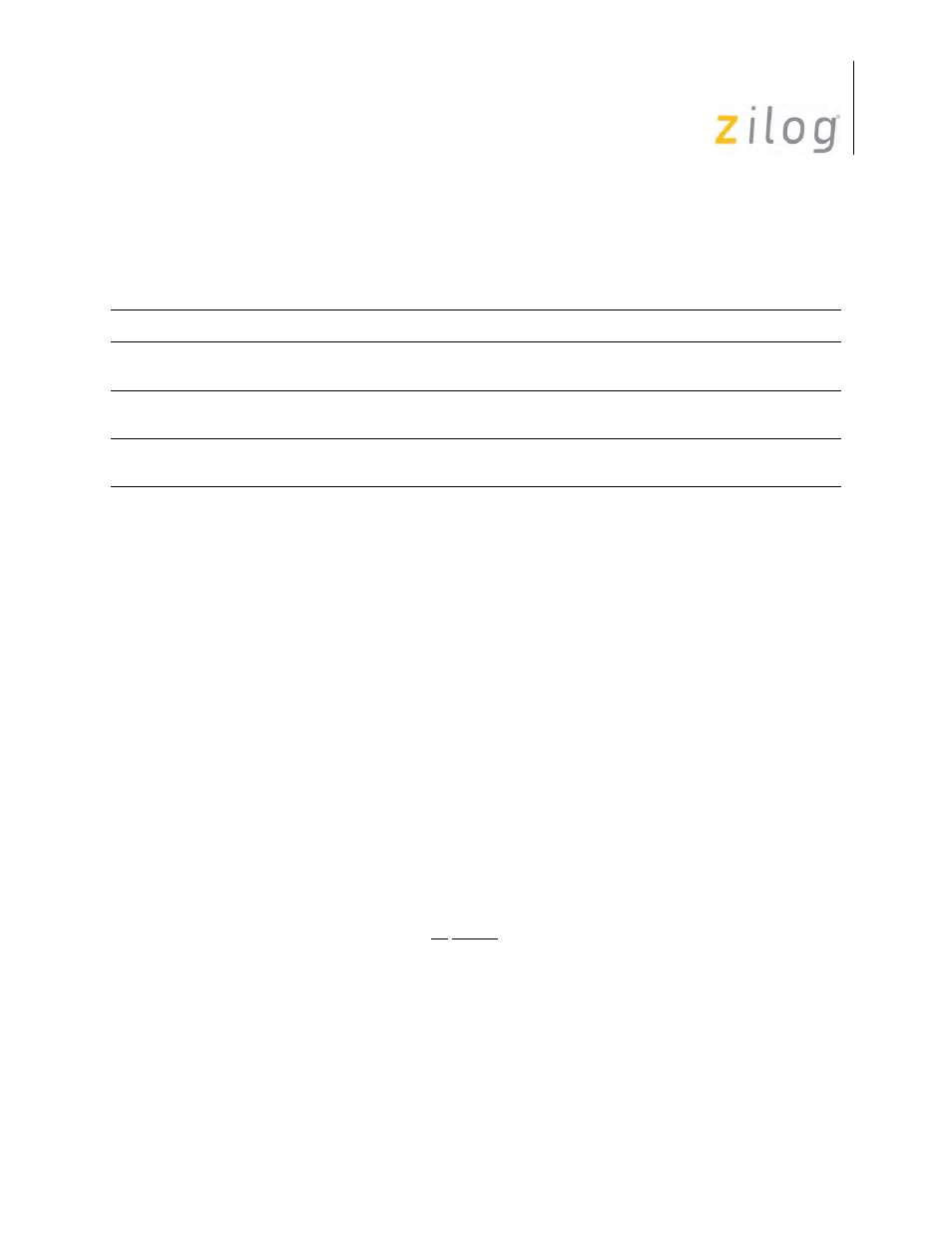Zilog Z80230 User Manual
Page 264

SCC/ESCC
User Manual
UM010903-0515
Application Notes
257
Interrupt Daisy Chain (Priority) Order
Jumper block J25 selects whether the (E)SCC device is at the start or the end of the interrupt daisy
chain.
This variability is provided in part because early versions of the Z85230 ESCC had trouble pass-
ing an interrupt acknowledge down the daisy chain if it occurred to a lower-priority device’s
request just as the ESCC was starting to make its own request. Current 85230’s do not have this
problem.
(E)SCC
Socket U2 can be configured for either ESCC or SCC, and for versions that use either multiplexed
address and data. Jumper blocks J20 and J21 select certain signals accordingly. For a part with
multiplexed addresses and data (80x30), Jumper J20-J1 to J20-J2 leaving J20-J3 open and jumper
J21-J1 to J21-J2, J21-J4 to J21-J5 leaving J21-J3 and J21-J6 open. With such a part, software can
directly address the (E)SCC’s registers and writing register addresses to Write Register 0 (WR0) is
not required.
For a part having a non-multiplexed bus (85x30), jumper J20-J2 to J20-J3, J21-J2 to J21-J3, J21-
J5 to J21-J6 leaving J20-J1, J21-J1, and J21-J4 open. In this case, software must handle the
(E)SCC by writing register addresses into its WR0 to access any register other than WR0, RR0, or
the data registers. Channel A and Channel B can be handled on a polled or interrupt-driven basis.
Channel A of the (E)SCC connects the user’s PC or terminal for use with the Debug Monitor
included in this evaluation kit.
Channel B (but not A) can be handled on a DMA basis using the 80186’s internal DMA channels,
or on a polled or interrupt driven basis.
Jumper block J23 allows Channel B’s W/REQB output to be used for either a Wait function or a
Receive DMA Request function. To use the out for Wait, jumper J23-J2 to J23-J3 and leave J23-J1
open. The Wait function only if the software has to delay completion of a Read from the (E)SCC
Receive Data Register until data is available, and/or has to delay completion of a Write to the
Transmit Data Register until the previously written character is transferred to the Transmit Shift
Register. These modes are alternatives for checking the corresponding status flags and can be used
to achieve operating speeds higher than those possible with traditional polling, although not as fast
Priority Order
To make the interrupt priority be:
Jumper J25 as follows
(E)SCC highest, IUSC, ISCC, (M)USC lowest
J25-J2 to J25-J3, J25-J4 to J25-J5 (J25-J1,
J25-JX open)
IUSC highest, ISCC, MUSC, (E)SCC lowest
J25-J1 to J25-J2, J25-J3 to J25-J4 (J25-J5,
J25X open)
IUSC highest, ISCC, USC, (E)SCC lowest
J25X to J25-2, J25-J3 to J25-J4 (J25-J1,
J25-J5 open)